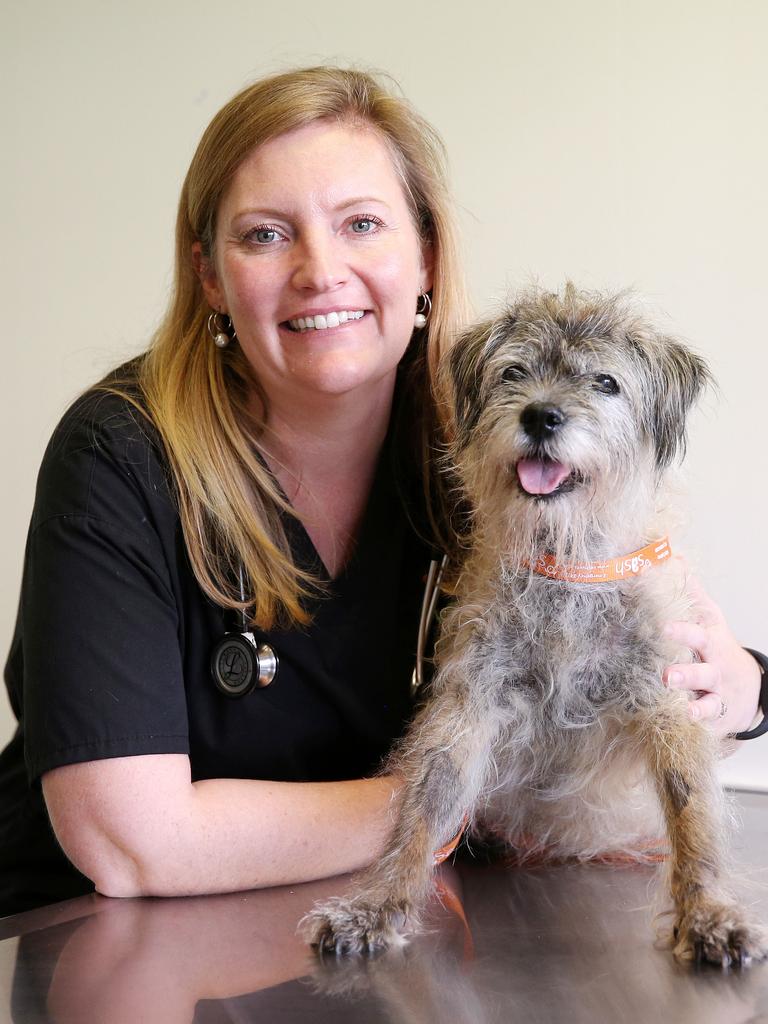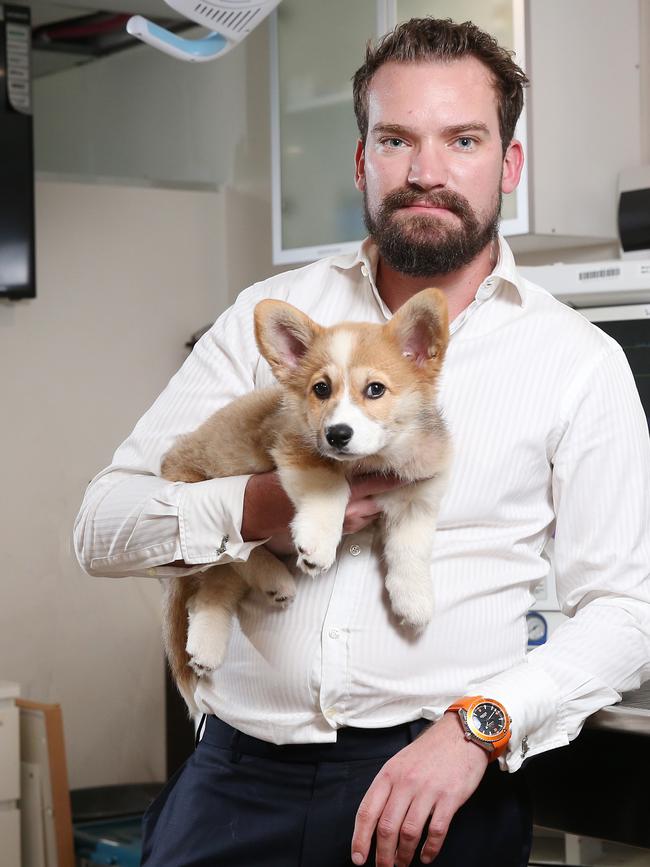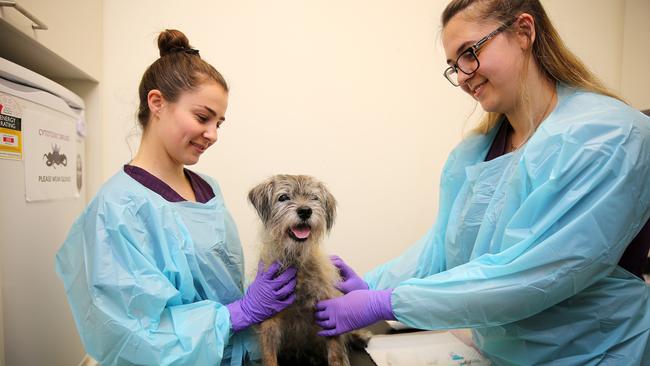From puppyhood to palliative care, our pets are living their best lives
From pacemakers to 3D-printed bone implants, the evolution of our pets into family members is seeing Aussies go to great lengths — and expense — to extend their animals’ lives.
- Pet food brand recalls: Are your animals at risk?
- Vet reveals how to buy safest food for your pet
- Sydney man’s $40K vet bill to save dog’s life
They sleep with us, eat with, even walk us down the aisle. Australia’s dogs and cats are more part of the family than ever, and they’re living better, longer lives because of it.
More Australians now live with a cat or dog than a child under 16, and two thirds of owners view their pets as family rather than mere companions.
As a result, we’re spending higher amounts to extend their lives from “puppyhood” to palliative care, with advancements in vet medicine and a higher uptake of pet insurance now fuelling a $3.5 billion vet services industry, according to an IBISWorld report.
“Animals are definitely becoming members of the family and that’s coincided a lot with the move of animals to indoors,” vet and lecturer at Sydney University’s School of Veterinary science Dr Anne Fawcett told The Daily Telegraph.
“More of us are living with animals in our house so we’ve got a lot closer contact with them. They’re a big part of our day, a big part of our routine and we think of having pets today as a real commitment.”

Demand for advanced veterinary services has significantly grown in Australia thanks to our close human-animal bonds.
Together with the rise of pet insurance, our fur kids are now getting pacemakers, 3D printed bone implants, advanced dentistry, even stem cell therapy to prolong their quality of life.
“When I was a kid, it you had an animal with a broken leg, one of the things the vet would routinely offer was euthanasia,” Dr Fawcett said.
“Now that would not be the first, second or third option.
“Not only do we fix that leg but we can rehabilitate that animal now, so the standard of care has increased, and there’s been a huge increase in the number of veterinary specialists who can offer a huge range of specialist care.
“The flip-side of that is now we have all these options, people are often faced with the question, how much should I spend on an animal? That’s a really personal question because people have different resources, they have different values.”
Not all animals win the owner lottery — thousands are still abandoned each year — but research by Australian Medicines Australia shows most owners are more responsible.
Vets see fewer traumatic injuries such as car accidents thanks to better leash laws and dogs and cats being kept indoors, but treat more old-age conditions like arthritis and cancer.
Veterinary oncologist Dr Sandra Nguyen of SASH Vets said about 50 per cent of dogs over the age of ten would develop a tumour and there were multiple treatment options.
“Part of the reason I wanted to become an oncologist is because I felt (as an industry) we weren’t doing a very good job of treating cancer in our pets,” Dr Nguyen said.
“They are family members and we were just putting them to sleep. We weren’t even really offering palliative care.”
For years, vets relied on private human radiation clinics to discreetly treat pets with cancer, and many still do. SASH’s comprehensive cancer centre, which provides chemotherapy, radiation therapy and surgery, has given owners and pets a range of options for treatment, with specialists and nurses on hand six days a week.
SASH’s Elekta Synergy linear accelerator, the most up-to-date radiation therapy available to pets in Australia, can treat a wide range of cancers, from lymphomas to sarcomas, brain and spinal tumours, as well as providing palliative pain relief.
Treatment doesn’t come cheap. Radiation can cost up to $12,000, six-months of chemo $8000-$9000.
But when a life and death decision comes down to dollars and cents, pet insurance can cover up to 80 per cent of the cost, she said.
“It’s incredibly valuable because even though people have been paying it for 10 years, in the time they see me, they pretty much get it back,” Dr Nguyen said.
“It allows them to do $10,000 to $15,000 worth of medical bills they would not necessarily have been able to.”


If you want to put $7000 into saving your animal’s life and letting them live another five years, how is that possibly a bad thing?
Demand for new technologies and medical procedures is being driven by owners, who want the best for their “fur babies” Southern Cross Veterinary Clinics’ Sam Kovac said.
“I feel lucky as a practitioner to be working now because we’re right at the edge where pets are more like children for a lot of people,” Dr Kovac said.
“They are genuine child replacement for some people and more and more people are looking for treatments that they would have, or they would subject a child to.”
The downside is without pet insurance there’s no buffer to the cost. While uptake of pet insurance has risen since 2013, it’s still not widely used. In 2016, only 26 per cent of households with dogs and 19 per cent with cats had policies.
But as insurers move towards HICAPS style systems, owners will soon be less out of pocket although they’ll still face social pressures around spending big on vet bills, Dr Kovac said.
“I have conversation in my practices on a weekly basis where clients are saying, ‘Oh is this the right decision, my friends are saying I shouldn’t be doing that, it’s too much money.
“I think that’s shocking. If you went to buy a $7000 TV, there’d be no judgment from your mates. But if you want to put $7000 into saving your animal’s life and letting them live another five years, how is that possibly a bad thing?
“It’s not consumerism, it’s a sentient being. Life is a better investment.”



